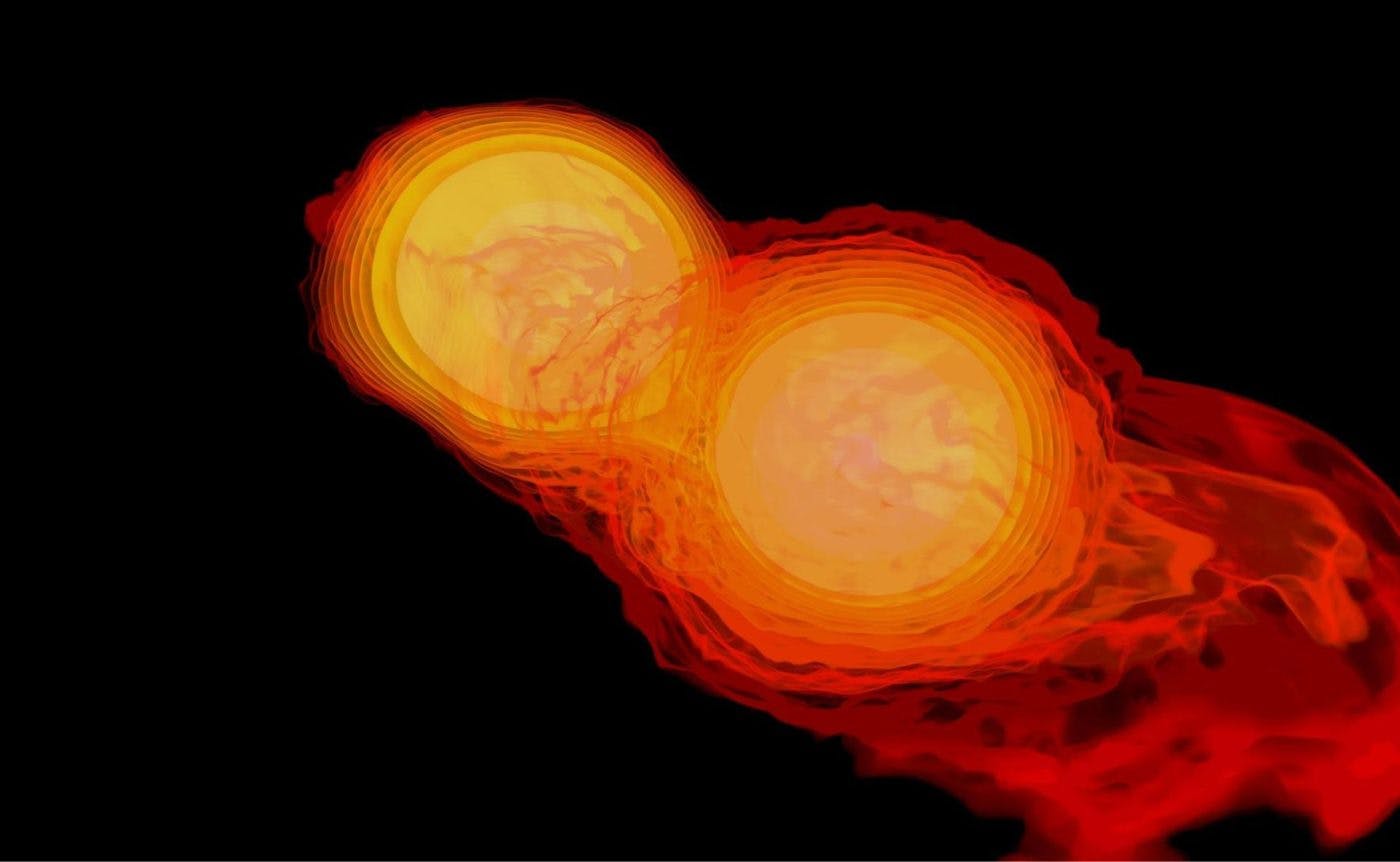
What are stars made of?
In the immortal words of Pumbaa, Disney’s greatest warthog: ever wonder what those sparkly dots are up there?
Well, we don’t wonder – we know…sort of.
We spoke to Distinguished Professor Susan Scott, Dr Karl Wette and PhD student Neil Lu from the Centre for Gravitational Astrophysics at ANU College of Science and Medicine to find out a little more about the stars we can see, some that we can’t and what they’re made of.
With you, everything’s gas
First things first: stars are definitely not fireflies or dead kings of the past, as proposed by Timon and Simba, Pumbaa’s co-conspirators in scientific speculation.
That we know for sure, according to Scott.
“Stars are basically balls of very, very hot gas, including gaseous hydrogen and other elements, all of which can be recreated in laboratories on Earth,” she says.
So Pumbaa had it right and was the true brains in that operation.
While very large, stars also have a finite amount of fuel, meaning they don’t last forever.
Take our sun, for example. It’s the parent star of our solar system and is roughly halfway through its lifecycle.
“The sun is fairly typical for stars of this age. Despite being 1.4 million kilometres in diameter, it’s known as a ‘dwarf’ star,” Scott says.
“In about five billion years from now, it will morph into a ‘giant’ star, and become brighter and redder as it chews through its remaining fuel.”
But that’s just the beginning
So we know quite a bit about the stars we can see in the night sky, but there is another kind of star that scientists are still trying to understand.
Neutron stars are much smaller than regular stars – only around 20 kilometres in diameter – but are roughly double the mass of the sun. Exactly what that mass is made of we don’t know.
“Neutron stars are incredibly interesting because of their compact size and huge densities. These are extreme conditions which we could never replicate in laboratories on Earth,” Scott says.

Two neutron stars rip each other apart to form a black hole. Photo: NASA
“That means that, if we want to know what the laws of physics are when matter is squashed to extreme densities, neutron stars are really the only laboratory we have where we can test those theories out.”
Scientists think there are around one billion neutron stars roaming about in our galaxy, the Milky Way, but most of them are invisible to the human eye and even the most powerful telescopes.
Listening out
Just because they’re invisible, however, doesn’t mean neutron stars will necessarily remain a total mystery forever.
“They’re invisible, but we’re hoping that they are not silent; that instead they are ‘humming’ a steady tune in gravitational waves, Lu says.
Scott, Wette and Lu hope their approach of listening rather than looking for neutron stars might shed some light on what they’re made of.
Over the next 18 months, they’ll be participating in a new observing campaign with the Laser Interferometer Gravitational-Wave Observatory (LIGO), which is operated by American universities Caltech and MIT.
“If our gravitational wave detectors are sensitive enough to listen in, we’ll be able to study neutron stars in a completely new way, and likely make major new discoveries about them,” Scott says.
If successful, this could have significant implications for our understanding of the galaxy and astrophysics.
“We’re sure to make many exciting discoveries from two black holes smashing into each other, and if we hear a pair of neutron stars colliding, we’ll be training telescopes from ANU, Australia and around the world at the sky to hopefully catch the ensuing explosion,” Wette says.
“We really hope that we may hear, for the first time, the faint ‘hum’ of gravitational waves from single neutron stars somewhere in our galaxy.
“This will put us on the path to unlocking the mysteries of these most enigmatic stars.”
If that can happen, Timon, Pumbaa and Simba would surely be impressed.
Find out more about what neutron stars are made of in a new essay by Susan Scott, Neil Lu and Karl Wette, submitted to the Gravity Research Foundation.
This story was first published by ANU Reporter.




